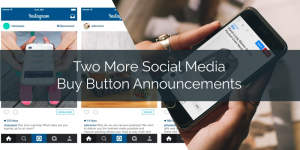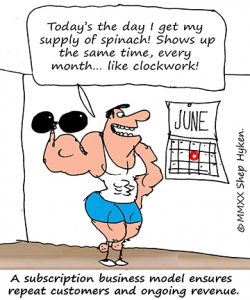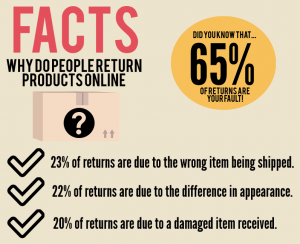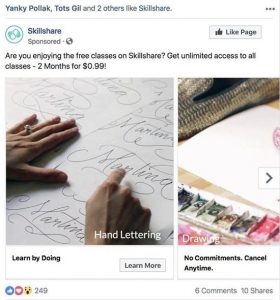September 18, 2016

We have reached the point of critical mass on mobile. People are increasingly spending less time on other channels and more time on their smartphone or other mobile devices.
As we know already, time spent is money spent. In fact, mobile e-commerce experienced a 47% growth rate last year, which means it is more important than ever to examine the success of your app and how it can be improved.

(screen shot ComScore)
The goal of every mobile app is to become part of a user’s daily routine. Consumers can have hundreds of apps on their phone, but their activity on most is little to nonexistent. They only use a small fraction, roughly 20 or so, of those apps on a daily basis. You want your app to be in that select 20. How do you get there? The answer is push notifications.
Push notifications are more effective than email when it comes to keeping your business top of mind with potential customers. They are more user-centric, create a fluent journey back to your brand’s app and, most importantly, they are more engaging.
The Four Stages of App User Behavior

Before you begin thinking about how to craft the perfect push notifications, you need to understand how consumers use and interact with an app. Again, your goal is for your app to be part of each user’s typical routine. Thus, it is important to know which users have already made your app part of that practice, which users need to be re-engaged, and which users are using your app for the first time. In other words, you need to know which of the following 4 stages each individual is at and how you can push them towards becoming a more engaged user.
Newbie – These are new users. They are seeing, testing and using your app for the first time. In the next few hours, days, or maybe just the next few minutes, these ‘newbies’ are going to decide if your app is worth their while. Ultimately, they will choose to uninstall the app and fall into the passerby stage or become an engaged or sometimes-dormant user. Your mission is to push them towards becoming an engaged user rather than uninstalling the app.
Passerby – These are the 23% consumers that used your app a few times, but ultimately moved on. Once they have uninstalled, your ability to send them push notifications is diminished. However, the passerby users still represent some value. First, they hold a wealth of information about what your app didn’t do for them. Secondly, your passersby users are a good way to measure the churn rate of your app and its overall success.

Engaged – These are the people that consider your app one of their favorites. They use it often, most likely daily. They are the single most important group and need to be targeted appropriately to maintain this high level of engagement. Accomplishing this stimulated engagement through push notifications takes quite a bit of creativity.
Dormant – Dormant users are individuals who were once engaged, but have slacked off. Perhaps, they don’t have as much time, got busy with other apps, or maybe just forgot about your app. Whatever the case may be, these users have to be reinvigorated to start using the app once again.
Leveraging Data to Craft Customer-Centric Push Notifications

Your push notifications need to be customer-centric. The type of message you send a dormant user isn’t going to be the same as the one you send to an engaged user. In order to understand your users better and know where along the app behavior spectrum each user is, you need app engagement data.
Data is the best way to get a complete view of each individual app user. Sadly, research shows that 95% of the data within a business goes untapped. After all, every user is different; they interact differently, have different preferences and so on.
The more you know about your users, the more personalized you can make your push notifications. Without personalization, 94% of consumers simply delete what you send.
When it comes to enhancing the customer experience, especially in the mobile environment, these are some useful data points you should tap into:
- Timing
- Location
- Behavior
- Preference
- Device
 Location – The most useful application of location-based data is knowing when your customers are physically near your store and offering them a push notification with user-specific deals, info or savings. Keep in mind that nearly half of mobile users opt-in to push notifications that are location based because they find them useful. So make sure you are giving them the information they need.
Location – The most useful application of location-based data is knowing when your customers are physically near your store and offering them a push notification with user-specific deals, info or savings. Keep in mind that nearly half of mobile users opt-in to push notifications that are location based because they find them useful. So make sure you are giving them the information they need.
Airlines have had success offering push notifications to notify travelers of gate changes or delays. Or if a consumer is traveling, you can notify them of store locations near them which they may not be familiar with.
Timing – In the past, companies would send out all of their marketing messages at a certain time of day. The consensus was that most users were active at 9AM, which made it the most attractive time to send these blanket messages. But, most isn’t all and the success of these blanket messages is in a sharp decline. Consumers want to be interacted with on their time, not yours. Knowing when each user is active on the app or browsing their phone is crucial to timing your notifications.
Behavior – As mentioned before, knowing what stage of behavior each user is at is important. You don’t want to push ‘buy now’ notifications on a newbie customer because it will feel like spam. Instead, you should send notifications that inform newbies about different features of the app, which they may not be aware of. This allows you to demonstrate all of the ways your app is useful to this new user and, hopefully, encourage them to stick around. Behaviors also include how an individual uses your app. They may not need or want to use every feature; they may only use it for a single purpose. Thus, you may want to cater notifications specific for those behaviors.
Preferences – Nothing says personalization like catering the mobile experience to your user’s preferences. The Harvard Business Review claims consumers are 40% more likely to buy from businesses who send personalized messages. Customers want the information, products, playlists, images etc. that they personally find most interesting.
For example, if your app delivers sports news, your push notifications should only pertain to a user’s favorite teams. You don’t want to oversaturate them with news about teams they aren’t even interested in. The same goes for push notifications about new products or savings.

Device – This can be an easily overlooked area, but it is very important when you consider the numerous different devices and touchpoints that consumers are using. Most of us, whether we are aware of it or not, have a routine schedule of when we use each of our devices.
We may use our smartphone when we first wake up, but then switch to a tablet device later in the morning, before alternating between an office laptop and our phones again. Push notifications can feel spammy or annoying when a user receives the same notification on each device. When you want to send a notification, you want to send it to the one device that the user is likely using at that moment.
Plan, Experiment, Test and Retest

The push notifications you send users should enhance the customer experience, not harm it. Every user should be glad they got the notification when they did; it should be valuable to them in some way.
Again, the “spray and pray,” blanket messages are no longer a valid strategy. In fact, they can be dangerous and damaging to the customer experience. The numbers show that people will actually delete your app if they are sent between 6-10 useless messages.
Perfecting and crafting the best push notifications takes some practice. There should be a considerable amount of planning involved. Before sending a message, ask yourself three questions:
- What is the goal of this message? (reduce churn, increase mobile purchases, improve cart fulfillment, onboarding, etc.)
- Does it achieve that goal?
- Does it do so in a way that the user will find interesting and engaging?
You can’t assume that by simply asking these questions, your push notifications will become effective in achieving their objectives. You actually have to measure their success using viable metrics.
- Click through rate
- Secondary action rate
- Engagement rate
- Sharing metrics
- Lead growth
- Number of sales
- Sales growth rate
- Re-engagement
Push notifications have to achieve a lot, with only a limited amount of real estate. Thus, even the slightest change in wordage or timing can make a big difference. To counteract this, you may want to test various messages at the same time to determine how each specific message performs relative to others.
For example, 1800-Flowers tested two similar messages alongside one another. The first message offered a 15% discount to come back and shop again. The other, worded almost identically, didn’t offer the 15% coupon. Surprisingly, the message without the savings deal was more successful at engaging consumers to come back and shop again. Remember, even a failed experiment or a bad push notification can be valuable, from a data standpoint.
Conclusion
Mobile is this generation’s gold rush and push notifications are the path to the west. Those that are willing to utilize data collection tools to craft more well-timed, user-centric notifications while experimenting with new and creative ways to reach these mobile users will quickly find themselves striking gold with mobile.
Business & Finance Articles on Business 2 Community(46)







